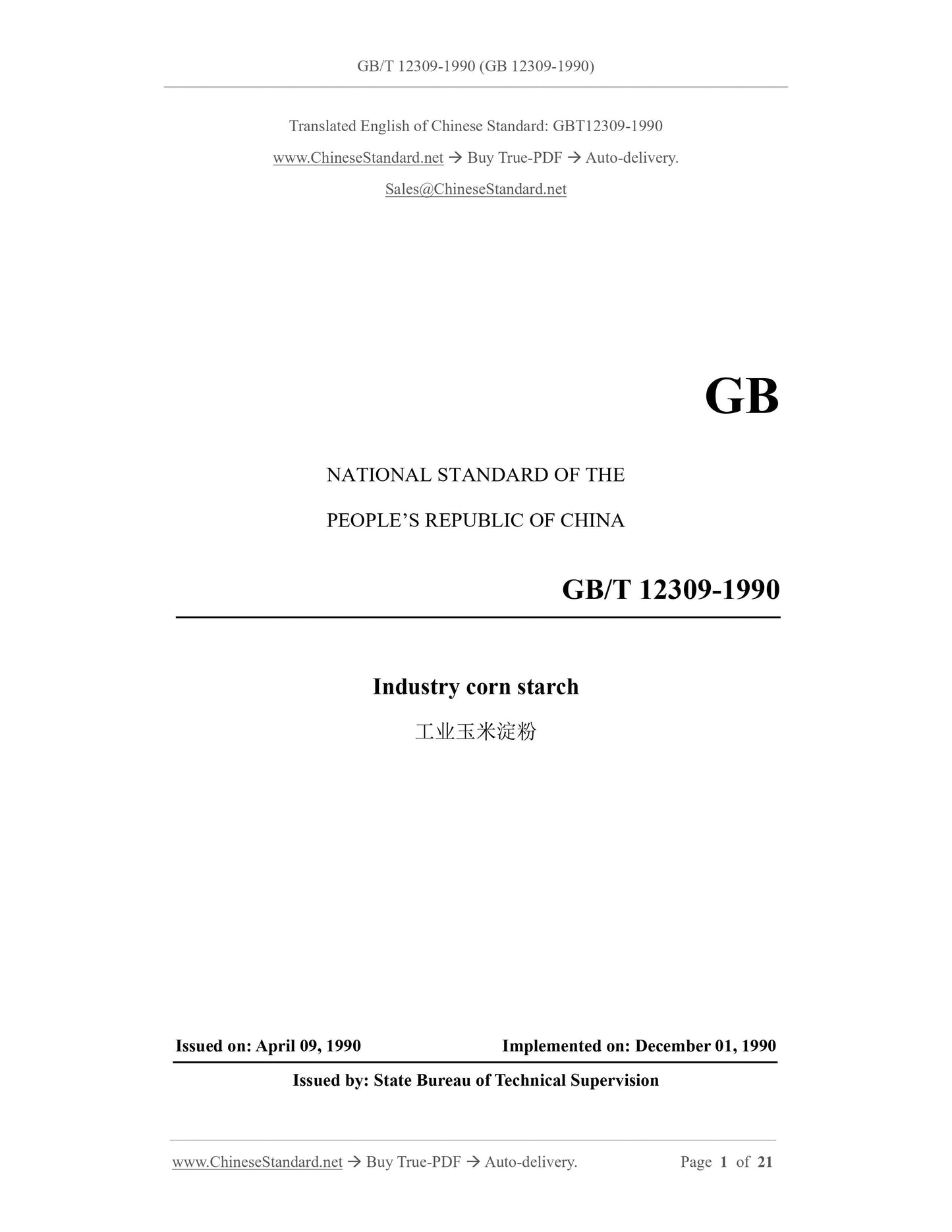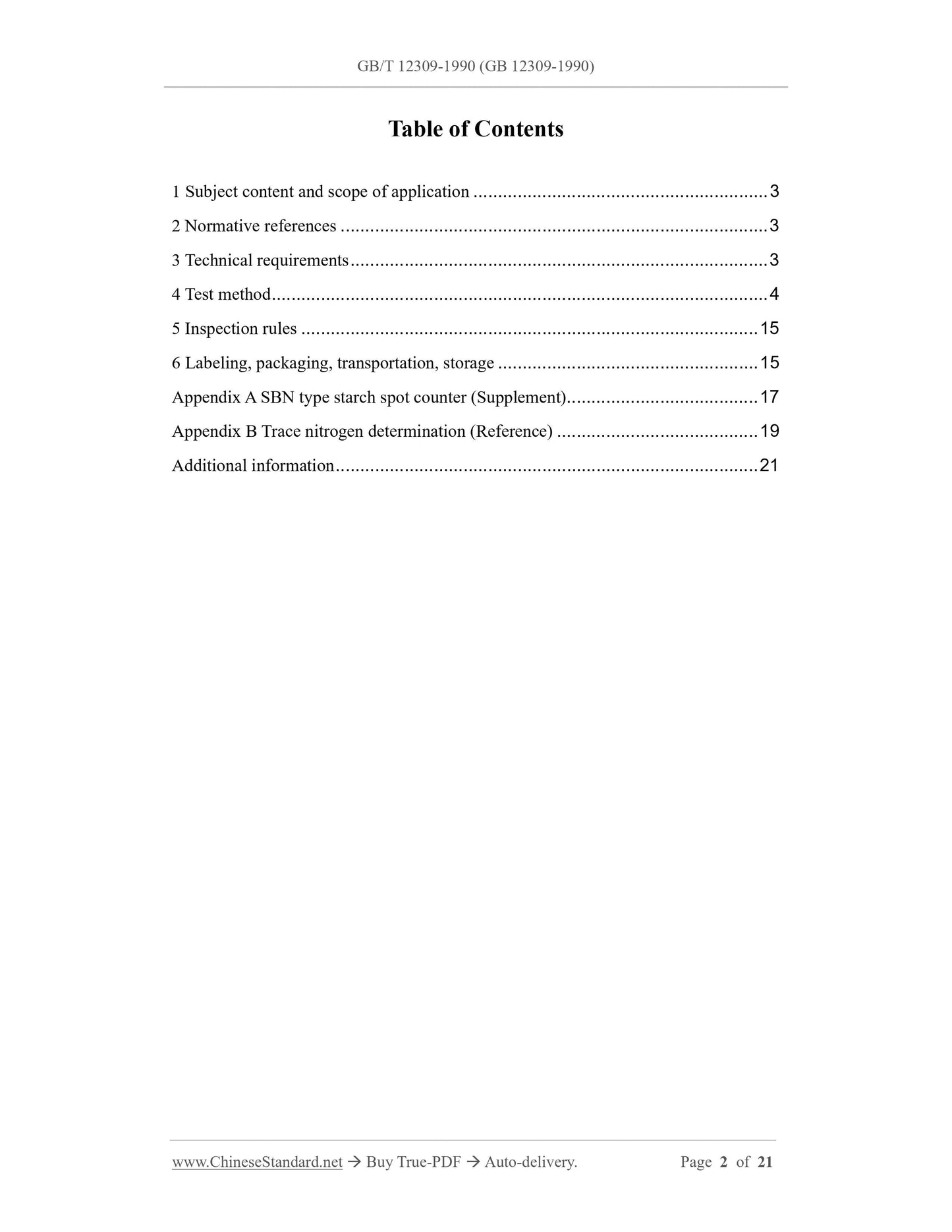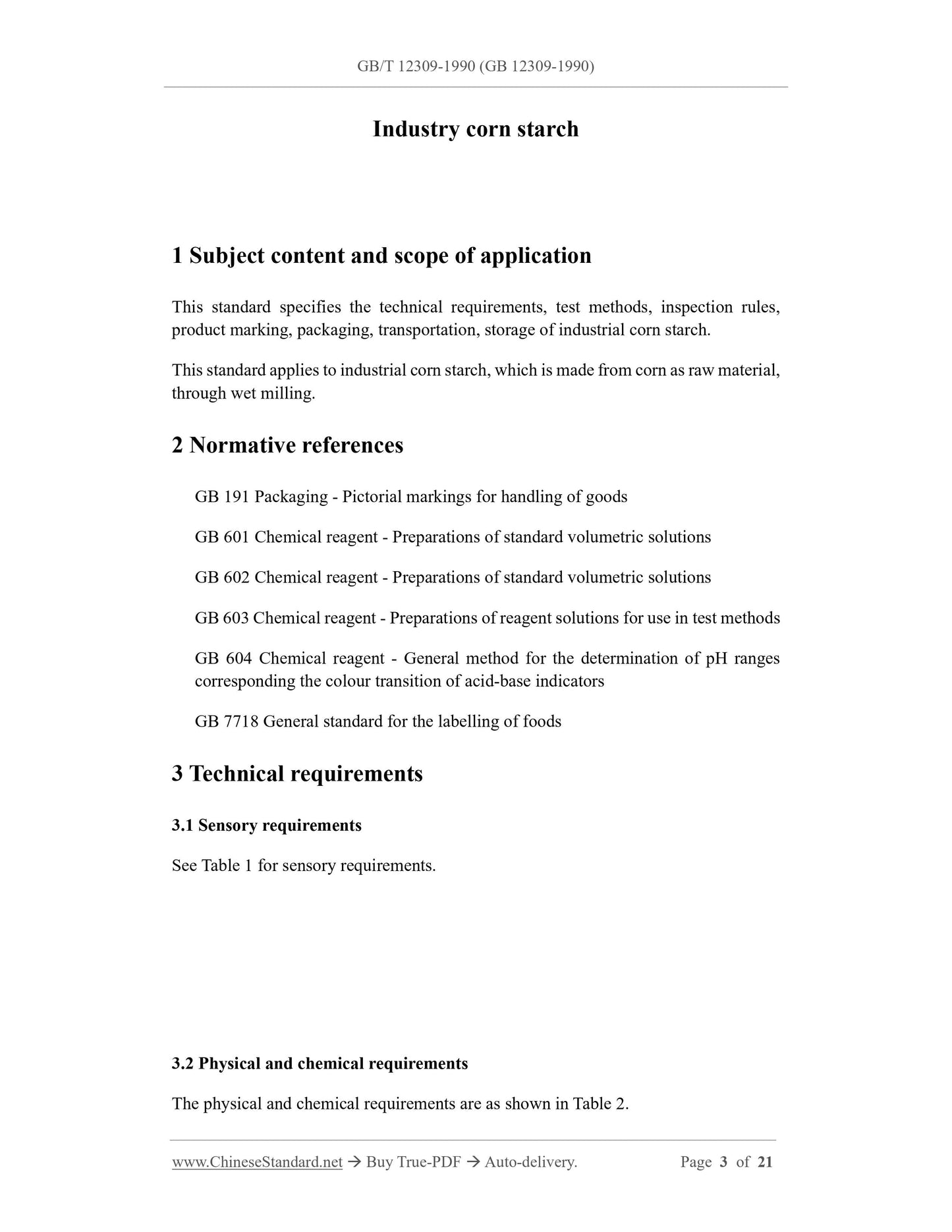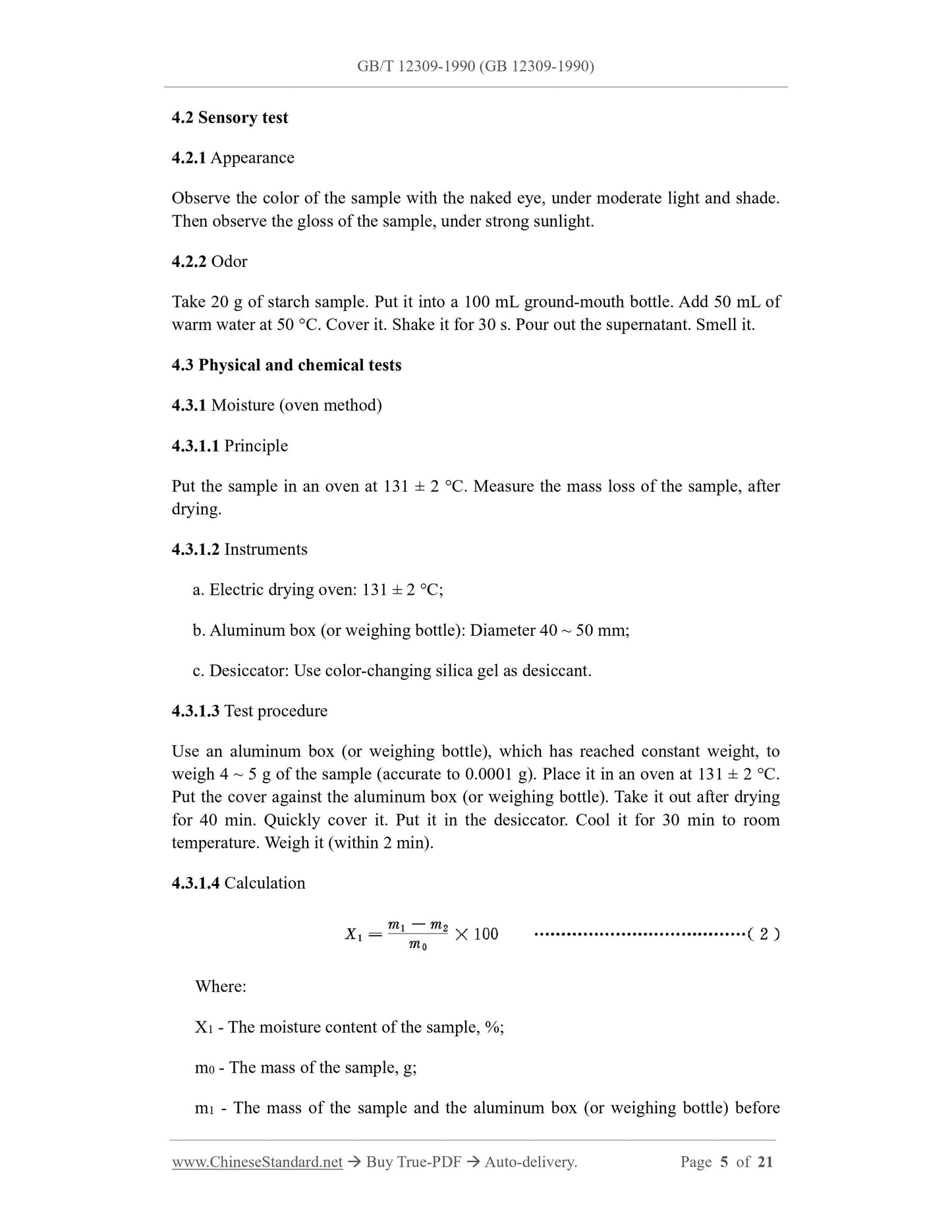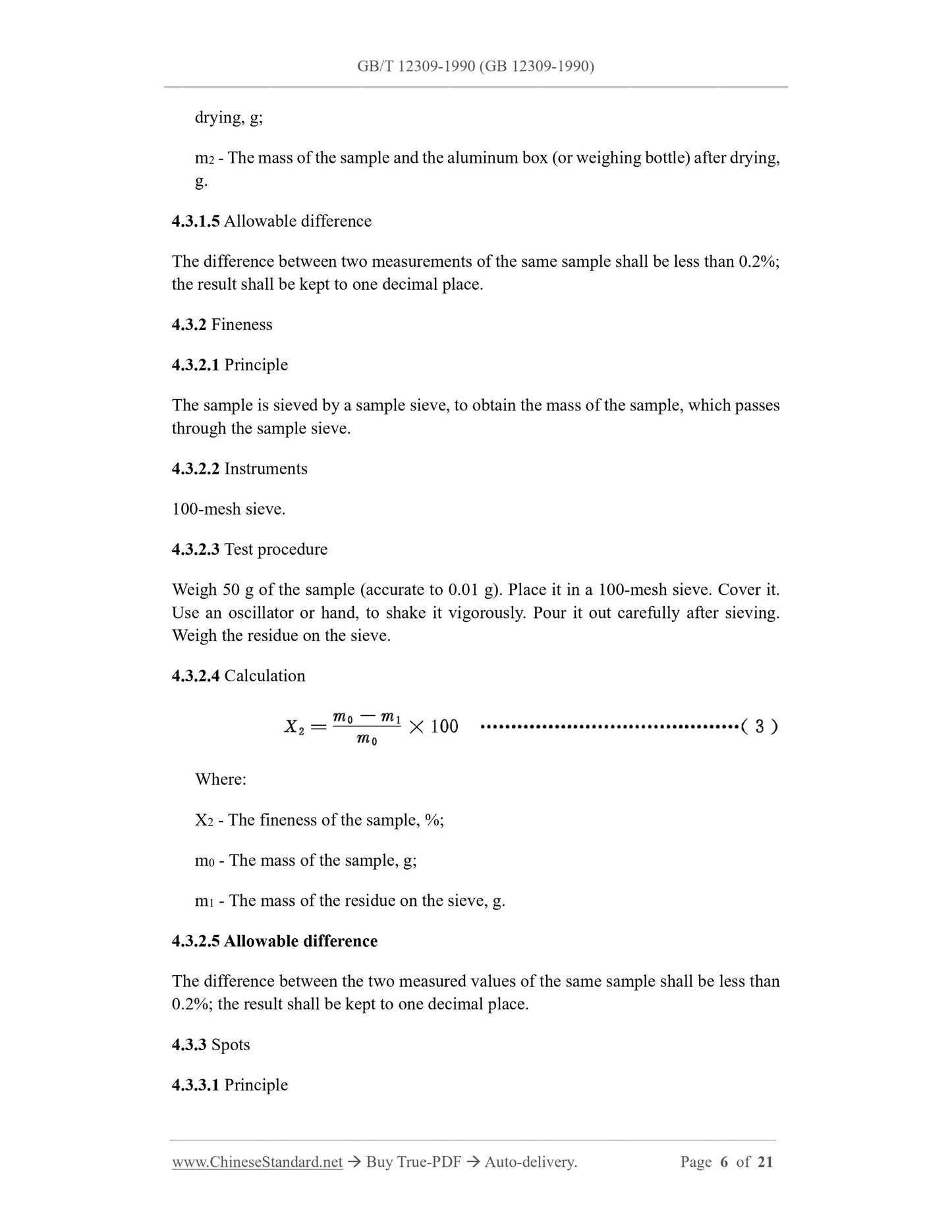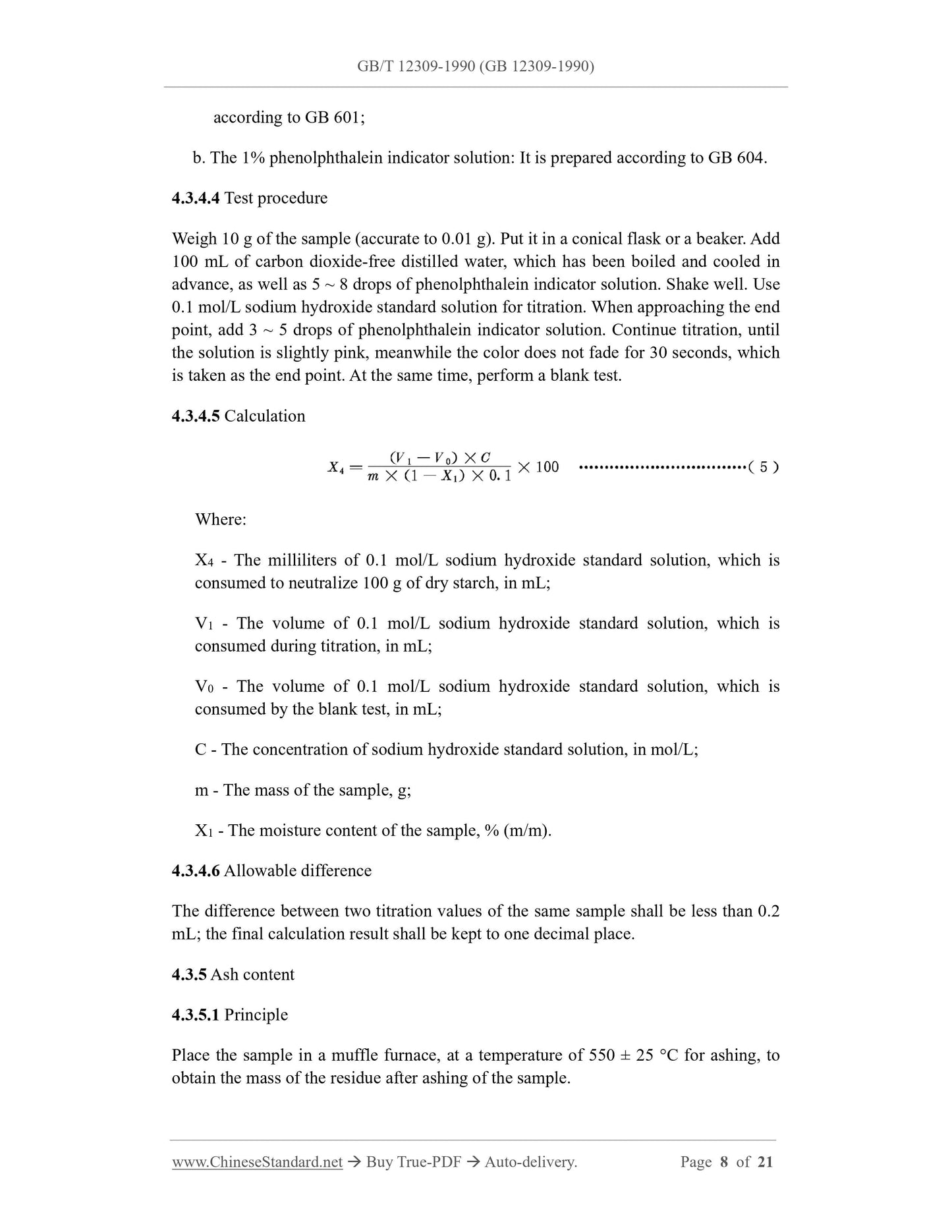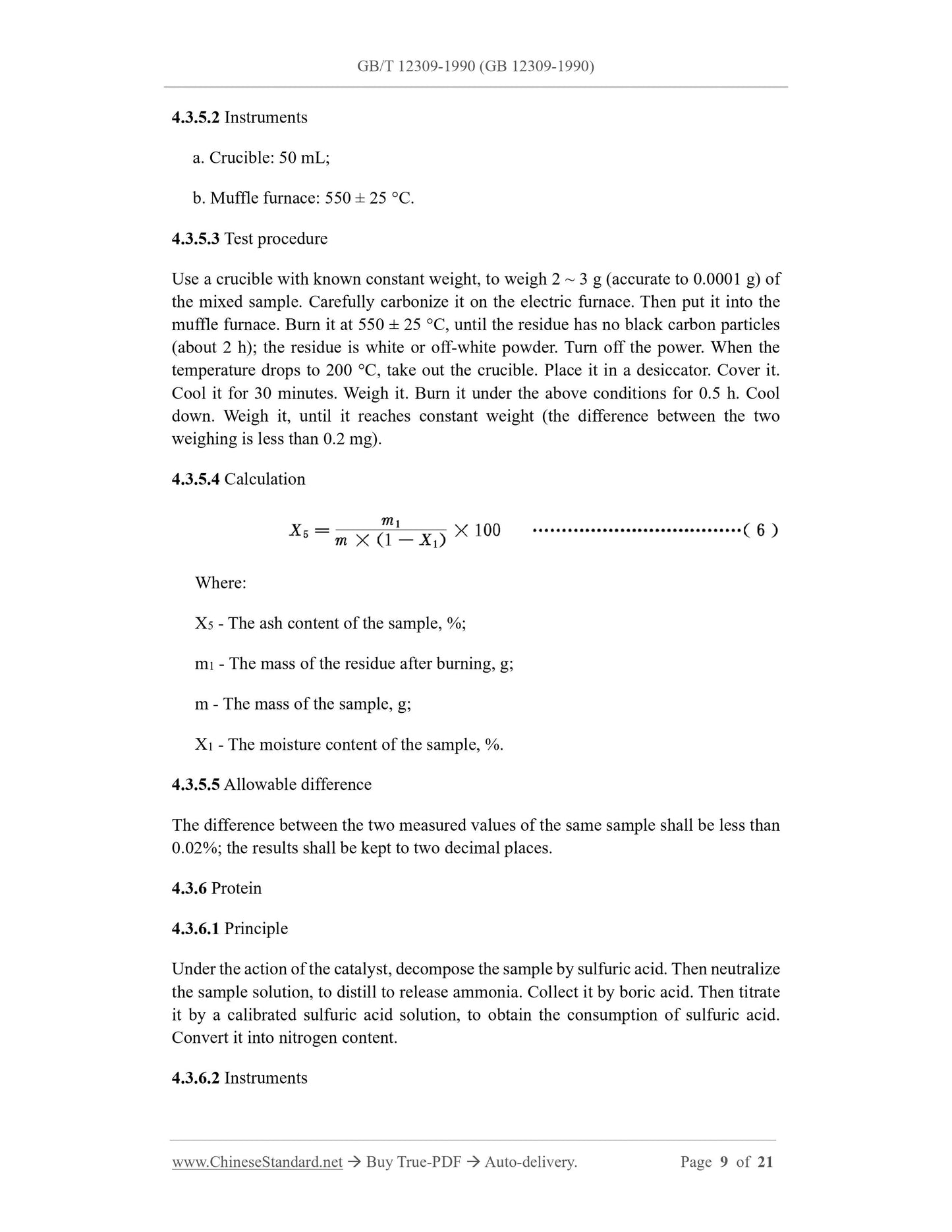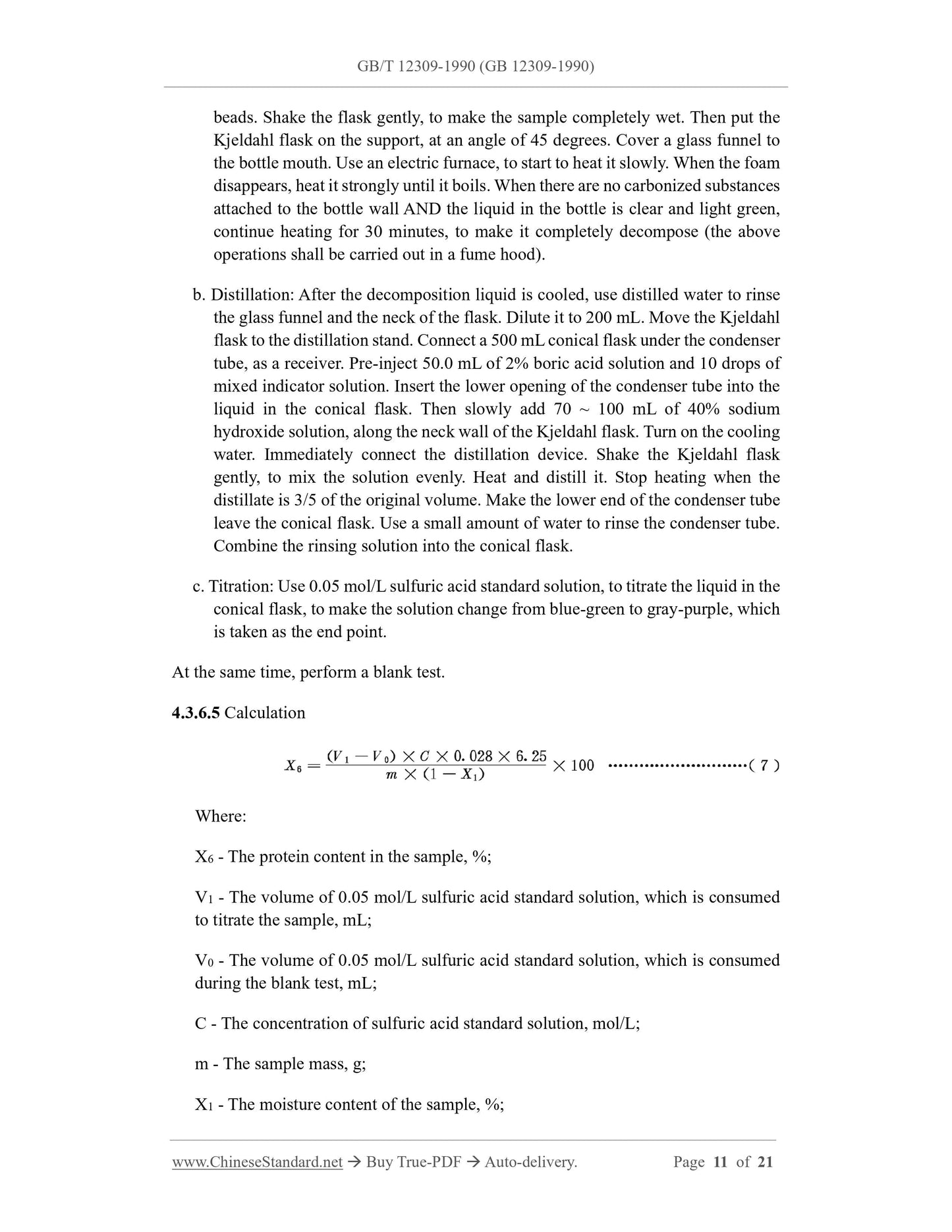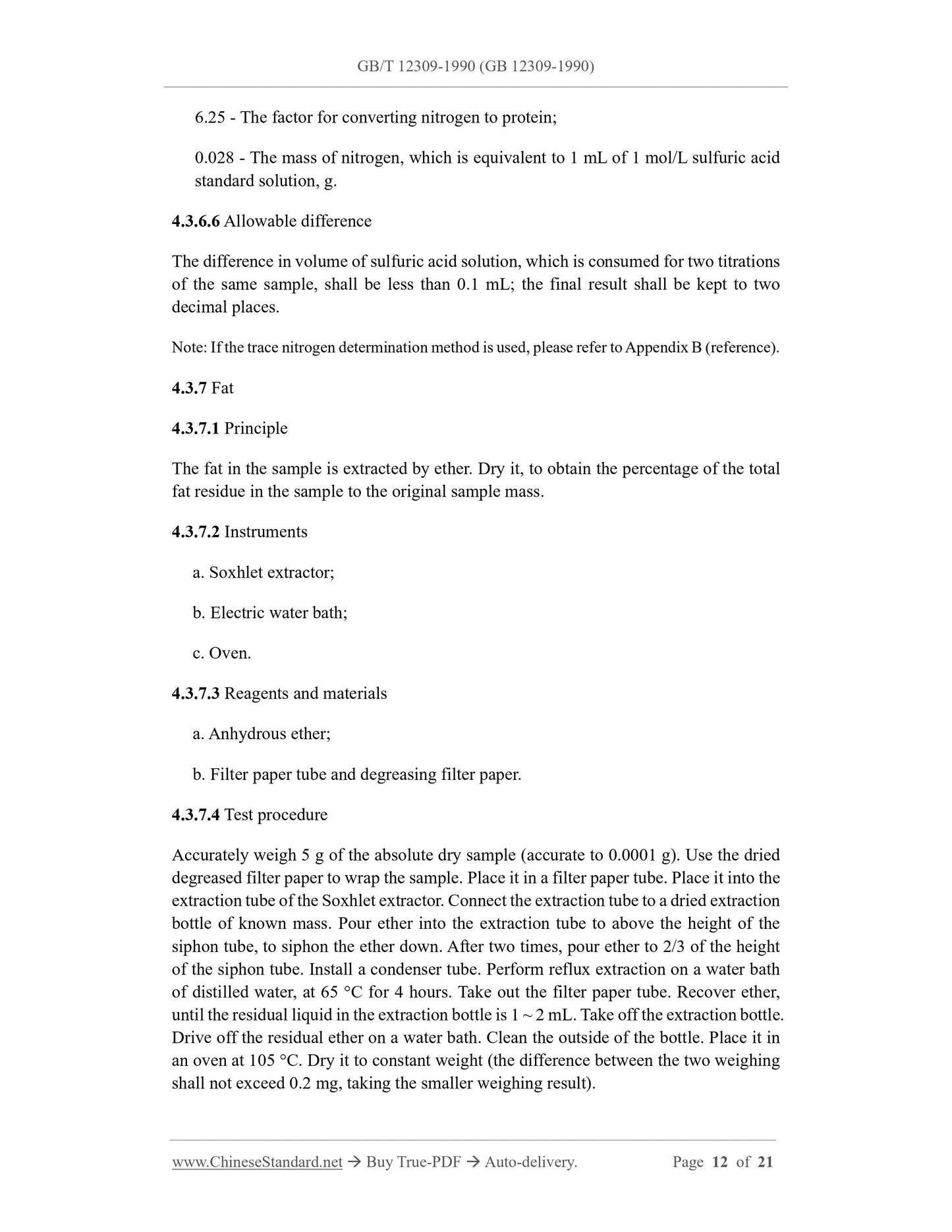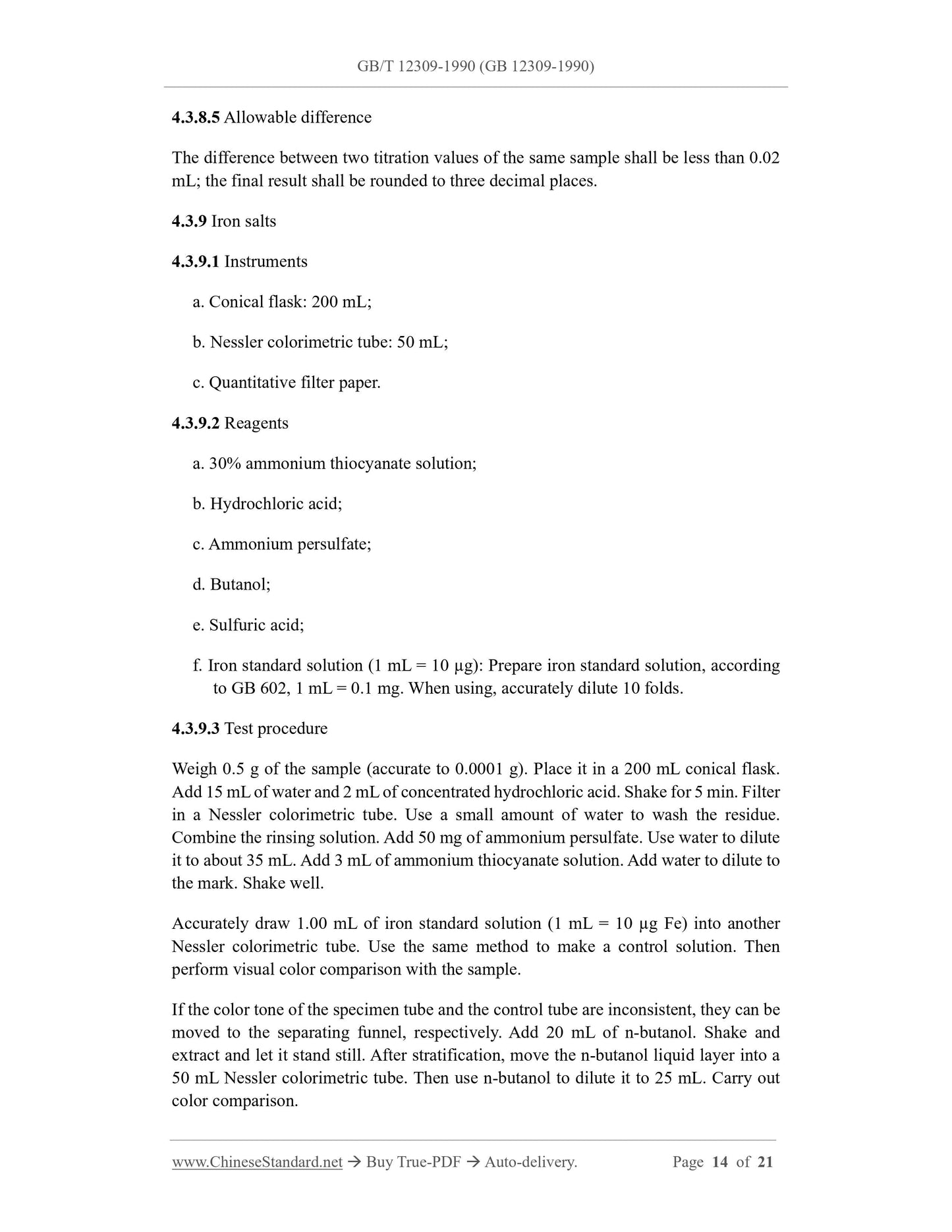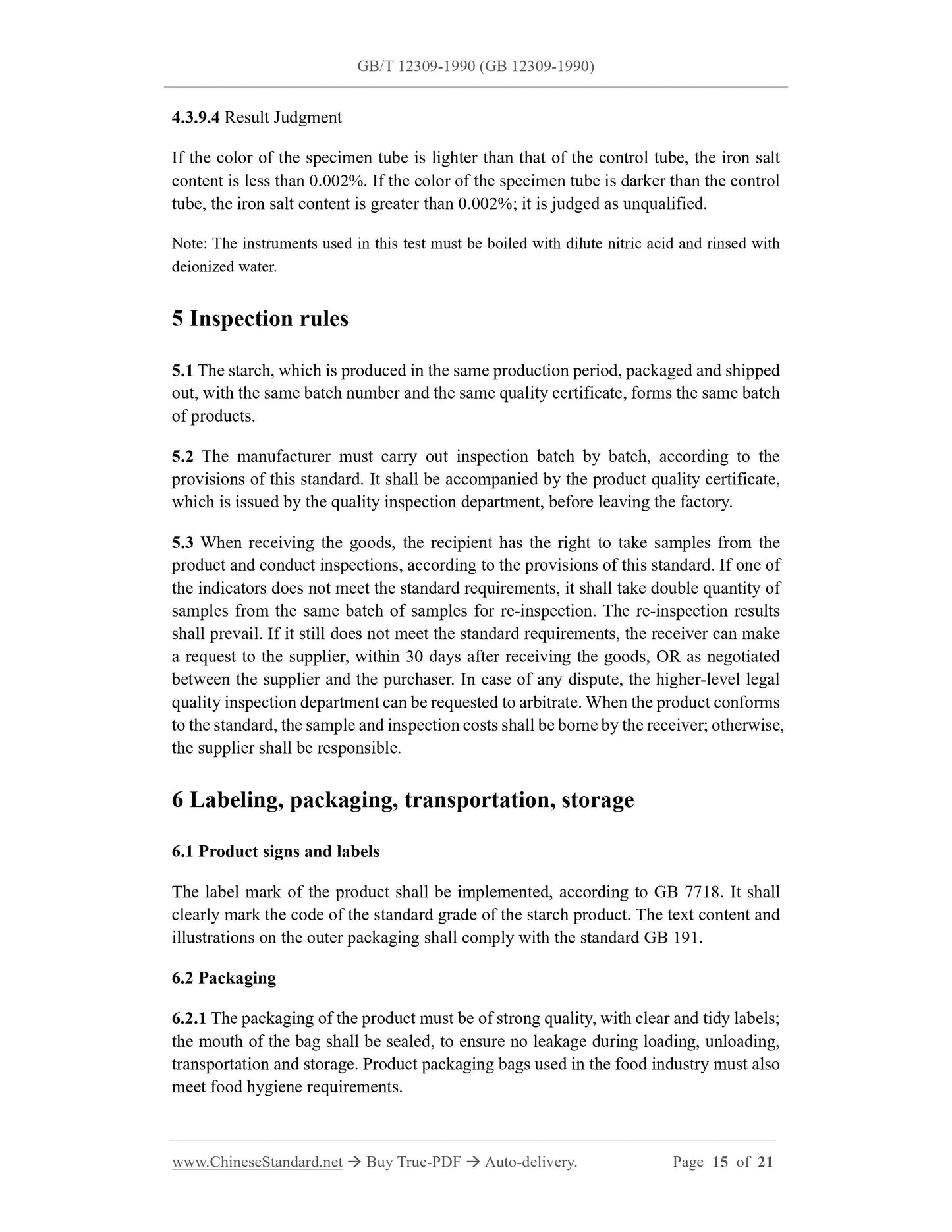1
/
of
11
www.ChineseStandard.us -- Field Test Asia Pte. Ltd.
GB/T 12309-1990 English PDF (GB/T12309-1990)
GB/T 12309-1990 English PDF (GB/T12309-1990)
Regular price
$360.00
Regular price
Sale price
$360.00
Unit price
/
per
Shipping calculated at checkout.
Couldn't load pickup availability
GB/T 12309-1990: Industry corn starch
Delivery: 9 seconds. Download (and Email) true-PDF + Invoice.Get Quotation: Click GB/T 12309-1990 (Self-service in 1-minute)
Newer / historical versions: GB/T 12309-1990
Preview True-PDF
Scope
This standard specifies the technical requirements, test methods, inspection rules,product marking, packaging, transportation, storage of industrial corn starch.
This standard applies to industrial corn starch, which is made from corn as raw material,
through wet milling.
Basic Data
| Standard ID | GB/T 12309-1990 (GB/T12309-1990) |
| Description (Translated English) | Industry corn starch |
| Sector / Industry | National Standard (Recommended) |
| Classification of Chinese Standard | X11 |
| Classification of International Standard | 67.06 |
| Word Count Estimation | 13,182 |
| Date of Issue | 4/20/1990 |
| Date of Implementation | 12/1/1990 |
| Quoted Standard | GB 191; GB 601; GB 602; GB 603; GB 604; GB 7718 |
| Issuing agency(ies) | State Bureau of Technical Supervision |
| Summary | This standard specifies the technical requirements of industrial corn starch, test methods, inspection rules and product labeling, packaging, transportation and storage. This standard applies to corn, made ??by wet milling and processing of industrial starch. |
Share
